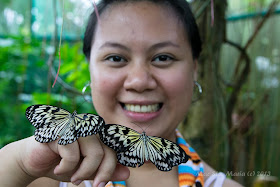UST-AB Photography Review: Apply the Human Attributes and Multiple Intelligence through Photography
Dr Abe V Rotor
Living with Nature - School on Blog
The Camera and the Computer revolutionized Photography, from an exclusive, sophisticated technology to a popular one. Almost anyone today – young and old, irrespective of educational attainment, creed, ideology, status in life, canhave access virtually to these magic duo. The Cam-Comp however is a mechanical-electronic tool, a machine, complex as it may seem. Its potential efficiency still lies on the man behind the lens: the human person as thinker, builder, player – and as praying man. Who has the faculties in eight realms of intelligence. Photography requires man’s both attributes and faculties, which guide him in the use of photography in communication and in arts.
ASSIGNEMT: UST Faculty of Arts and Letters
Photography
Identify what Human Attribute, and Realm/s of Intelligence, each of these photographs applies. Explain. Give the sub-title of each photo. (printing the photos is optional) (Handwritten on a short bond)
(1)

(2)
(3)
(4)
All of us are endowed with a wide range of intelligence which is divided into eight domains. It is not only IQ (intelligence quotient) or EQ(emotional quotient) or any single sweeping test that can determine our God-given faculties. Here in the exercise, we will explore these realms. With a piece of paper (1/4) score yourselves in each of these areas. Use Scale of 1 to 10, like the previous exercise
1. Interpersonal (human relations)
Sometimes this is referred to as social intelligence. Leaders, politicians excel in this field. “They exude natural warmth, they wear disarming smile,” to quote an expert on human relations. Name your favorite person. I choose Nelson Mandela, Condolezza Rice and Henry Kissinger.
2. Intrapersonal (inner vision self-reflection and meditation) Priests, nuns, poets, yogis, St. Francis of Assisi is a genius in this domain. Didn’t Beethoven compose music with his inner ear? Didn’t Helen Keller “see” from an inner vision?
3. Kinesthetics (athletics, sports, body language, dance, gymnastics)
Michael Jordan excels in this domain. Now think of your idol in the sportsworld, or in the art of dance. Lisa Macuja Elizalde is still the country’s top ballet dancer.
4. Languages or linguistics
There are people who are regarded walking encyclopedia and dictionary. The gift of tongue in the true sense is in being multilingual like Rizal.
(5)
(6)
(7)
(8)
(9)
(10)

(11)
(12)
5. Logic (dialectics, Mathematics)
Marxism is based on dialectics which is a tool in studying and learning. Likewise, this realm includes the intelligence of numbers – math, accounting, actuarial science, etc. This is the key to IQ test. Einstein, Newton, Socrates, Plato, Aristotle are my choices.
6. Music (auditory art)
Mendelssohn, Mozart, Chopin, Abelardo, Cayabyab, Lea Salonga – name your favorite. Beethoven is one of the world’s great composer, yet he cannot dance. I like to listen to Pangkat Kawayan play Philippine music.
7. Spatial intelligence (drawing, and painting, sculpture, architecture, photography)
The great artist, Pablo Picasso, was robbed in his studio. Hog-tied, he carefully studied the robber, the way an artist studies his model. After the incident he sketched the face of the robber and gave it to the police. The police made a 100 arrests but never succeeded in pinpointing the culprit. The sculptor Rodin wanted his subject to look as if it is melting. What could be a better expression of poverty for his masterpiece, The Burghers of Calais?
8. Naturalism (Green Thumb, Relationship with the Natural World)
There are people who are said to have the “green thumb”. Their gardens are beautiful even with little care. There are those who can predict weather, and tell you if the fish bites, or it is a good hunting day. They pick the reddest watermelon, fullest macapuno nuts, just by feel and sound. Good doctors, I suppose have the green thumb too.
What are your top three? Can you see their relationships? Relate them with your strength. On the other hand, in what ways can you improve on the other realms?
Make full use of your strength. And remember there are early and late bloomers. Nothing is too late to be able to improve on one’s deficiencies.
Maybe you lack a good foundation to explore your talents in a certain domain. But why don’t you catch up? Do you recall late bloomers who succeeded in life? As you reflect on your scores I’ll play for you on the violin On Wings of Song by Felix Mendelssohn. Fly, fly high and be happy like the birds. Just don’t be Icarus.
Reflect on the following:
1. Your strength and you weakness
2. Your “idols” and models
3. Resolution and affirmations ~
(13)
(14)

(15)
Lesson on former Paaralang Bayan sa Himpapawid, author with Ms Melly C Tenorio
738 DZRB AM 8 to 9 evening class Monday to Friday






























































